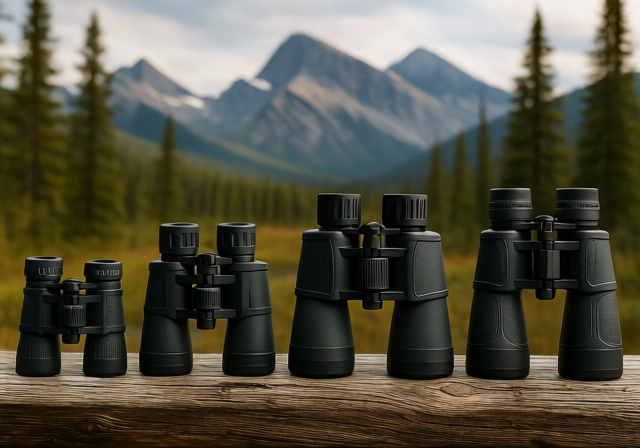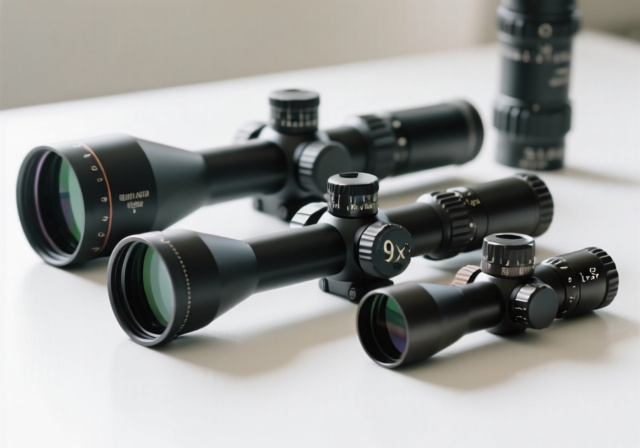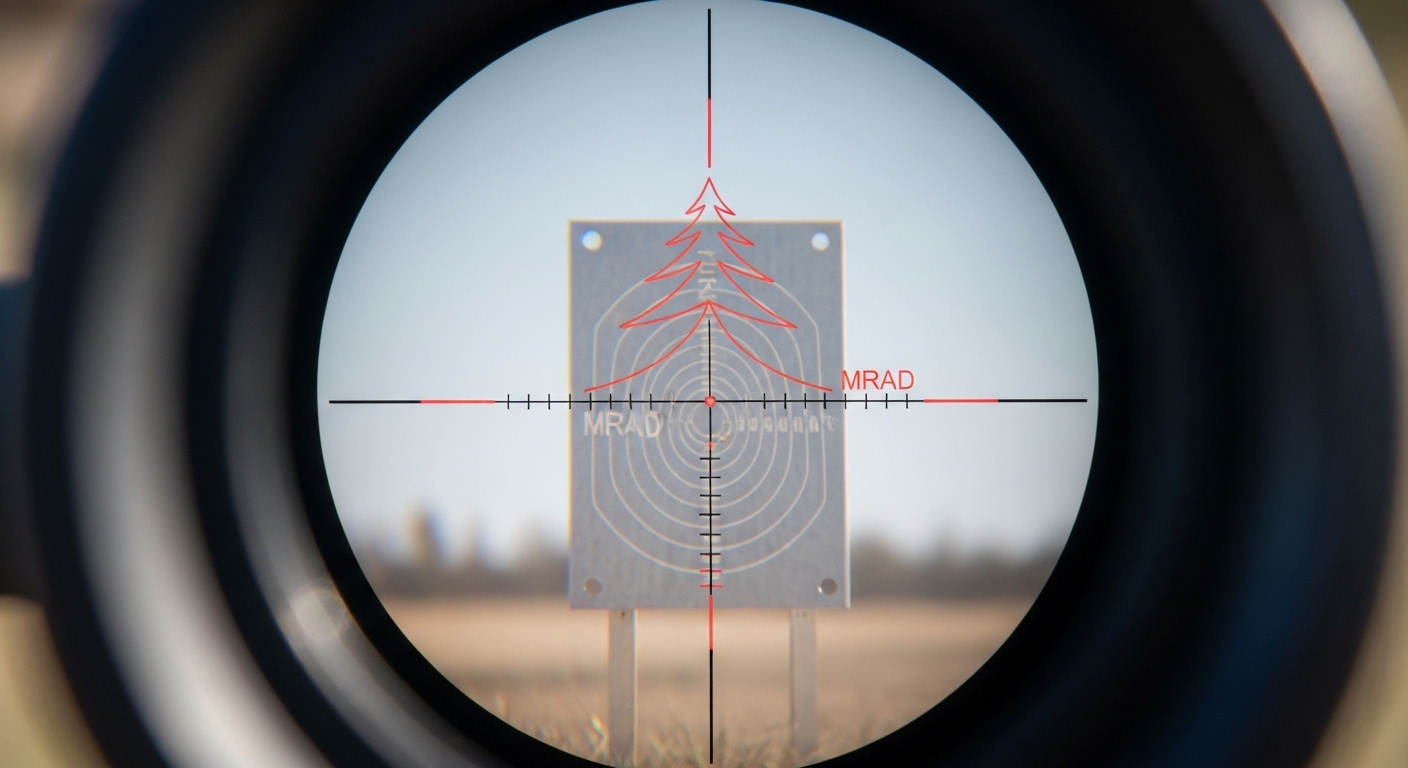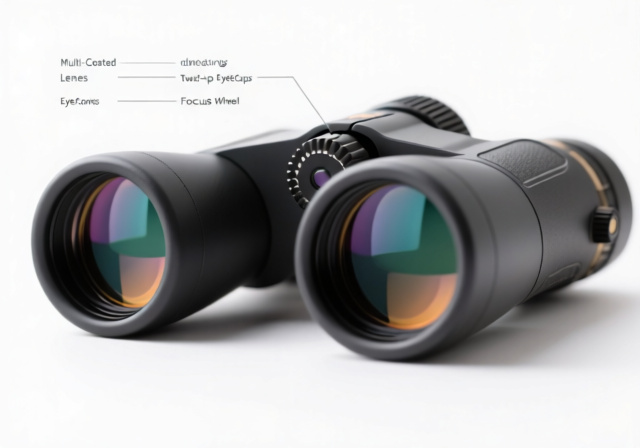

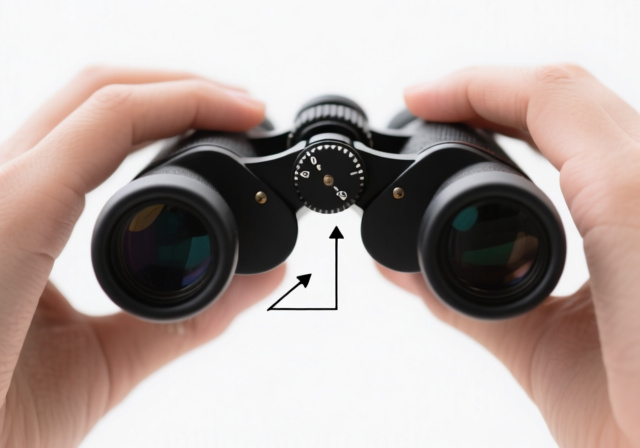

Ever looked through binoculars and wondered why everything looks blurry or you’re seeing double? I’ve been there – spent months frustrated with my first pair of binoculars because I didn’t understand proper focusing. Learning how to focus binoculars correctly changed my bird watching experience from frustrating to fantastic.
Proper binocular focusing is simply adjusting the optical components to create a single, clear image for both eyes using the central focus wheel and diopter adjustment. The central focus wheel adjusts both barrels simultaneously for distance, while the diopter compensates for vision differences between your eyes.
Why does this matter? Because proper focusing prevents eye strain, eliminates double vision, and ensures you see crisp, detailed images. After helping dozens of beginners with their binoculars, I’ve found that 90% of focusing problems come from not understanding the diopter adjustment.
In this guide, I’ll walk you through everything you need to know about focusing binoculars, from basic setup to advanced troubleshooting. Whether you’re a beginner or have been using binoculars for years, these techniques will improve your viewing experience.
Before diving into focusing techniques, let’s understand the key components that make proper focusing possible. Think of your binoculars as having two focusing systems working together: one for general distance and one for your unique vision.
The central focus wheel is the main knob you’ll use most often. It adjusts both barrels simultaneously to bring objects at different distances into focus. This wheel typically offers several full rotations, allowing for precise focusing from close objects (as near as 10-15 feet with some models) to infinity.
The diopter adjustment is the secret weapon most beginners miss. Located on the right eyepiece (or sometimes the left), it compensates for vision differences between your eyes. Most people have slightly different prescriptions in each eye – the diopter corrects for this so both eyes see equally sharp images.
Understanding understanding binocular numbers helps too. The first number (like 8x or 10x) is magnification – higher magnification means more precise focusing needed. The second number (like 42 or 50) is the objective lens diameter – larger lenses gather more light but may affect close focusing ability.
The interpupillary distance adjustment allows you to match the distance between the eyepieces to the distance between your eyes. Incorrect IPD causes blacked-out areas and can make focusing seem impossible. Proper IPD ensures you see through both lenses simultaneously.
Eyecups might seem simple, but they’re crucial for proper focus positioning. Twist-up or fold-down rubber eyecups adjust eye relief – the distance your eye needs to be from the lens to see the full field of view. Glasses wearers need eyecups twisted down, while non-glasses users typically benefit from them extended.
The focusing mechanism itself varies between binocular types. Central focus models use the main wheel for quick focusing with fine-tuning via the diopter. Individual focus (IF) binoculars require adjusting each eyepiece separately – common in marine and military binoculars for their durability.
For those interested in the technical details, our guide on binocular focusing parts dives deeper into prisms, lens coatings, and optical systems that affect focus quality. Understanding these components helps you troubleshoot focusing problems more effectively.
Ready to finally get that crystal-clear view? Follow these proven steps that work for 95% of binocular users. I’ve refined this method through years of teaching beginners and solving common focusing problems.
Step 1: Set Up Your Binoculars
Step 2: Focus Your Dominant Eye
Step 3: Adjust the Diopter
Step 4: Verify and Fine-Tune
✅ Pro Tip: Practice this process 3-4 times and it becomes second nature. Most experienced users can set up new binoculars in under 30 seconds once they master the technique.
Remember: your diopter setting is personal to your eyes. If someone else uses your binoculars, they’ll need to readjust it. That’s why many guides recommend noting your diopter setting or choosing binoculars with locking diopters.
The diopter is the most misunderstood but crucial component of binocular focusing. After working with hundreds of beginners, I’ve found that mastering the diopter separates frustrated users from those who get crystal-clear views every time.
What exactly is a diopter? It’s an optical measurement of lens power – specifically, how much the lens bends light. In binoculars, the diopter adjustment provides fine-tuning capability of typically -3 to +3 diopters, enough to correct for most common vision differences between eyes.
Here’s why diopter adjustment matters: most people have asymmetric vision – one eye might be slightly nearsighted while the other is normal, or you might have astigmatism in only one eye. The central focus wheel can’t compensate for these differences, but the diopter can.
When to Adjust Your Diopter:
Advanced Diopter Techniques:
For precise work like astronomy or digiscoping, try the “double-check method.” After setting your diopter, cover each eye individually to verify sharpness, then check both eyes together. This triple verification ensures optimal focus.
Some users with significant vision differences might need multiple diopter adjustments throughout a viewing session, especially when switching between near and far objects frequently. Don’t hesitate to make small tweaks – the diopter is there to accommodate your unique vision.
Common Diopter Mistakes:
The biggest mistake I see is users adjusting the diopter instead of the central focus when changing viewing distances. Remember: diopter is a one-time (or occasional) setting for your eyes, central focus handles all distance changes.
Another error is setting the diopter while squinting or straining. Relax your eyes and let them naturally focus – strained eyes give incorrect diopter settings that cause fatigue later.
For glasses wearers, decide whether you’ll focus with or without glasses and stick with that method. Switching between glasses and no glasses requires different diopter settings, which can be confusing and lead to improper focus.
Focusing binoculars with glasses presents unique challenges, but they’re easily overcome with the right techniques. As someone who wears glasses myself, I’ve learned the specific adjustments that make all the difference.
The main challenge for glasses wearers is eye relief – the distance your eye needs to be from the eyepiece to see the full field of view. Glasses add about 1-2 centimeters of distance, which can cause blacked-out areas if not addressed properly.
Key Adjustments for Glasses Wearers:
Always twist eyecups to the fully down position when wearing glasses. This creates the proper eye relief distance. Some premium binoculars offer “long eye relief” of 18-20mm specifically designed for glasses wearers.
Your diopter setting will likely be different with glasses versus without. If you sometimes remove your glasses for viewing, consider noting both diopter settings for quick reference.
Focus with your glasses on if you plan to wear them while viewing. Your brain is used to seeing through your glasses’ prescription, so focusing with them on provides the most natural view.
For detailed guidance specific to glasses wearers, including eyecup adjustments and eye relief optimization, check out our comprehensive guide on using binoculars with glasses. It covers everything from selecting glasses-friendly binoculars to advanced techniques for different prescription types.
Even with proper technique, focusing issues can arise. Through years of troubleshooting and helping fellow enthusiasts, I’ve compiled solutions to the most common problems.
Problem: Can’t Achieve Sharp Focus
If you can’t get a sharp image at any distance, first check that your diopter is set correctly. Readjust using the single-eye method. Still blurry? Clean your lenses – dirty lenses can mimic focus problems. Use proper lens cleaning solution and microfiber cloth.
Check if the binoculars have a close focus limit that’s farther than your target. Most binoculars can’t focus closer than 10-15 feet. If you’re trying to focus closer than this, the image will remain soft.
Problem: Double Vision or Ghost Images
Seeing double through binoculars usually means one of three things: incorrect diopter setting, wrong interpupillary distance, or misalignment (collimation issues). First, readjust your diopter using the single-eye method.
Next, check your IPD adjustment. Look through the binoculars at a bright background – you should see one perfect circle, not two overlapping ones. Adjust the barrels until the circles merge.
If double vision persists, your binoculars may be out of collimation – the optical tubes aren’t properly aligned. This requires professional repair. A quick test: focus on a horizontal line – if it appears at different heights in each eyepiece, you have a collimation problem.
Problem: Blacked-Out Areas in View
Black crescents or tunnel vision indicate improper eye position. For glasses wearers, ensure eyecups are fully twisted down. Non-glasses users should extend eyecups to the full upright position.
Your eyes might be too far from or too close to the eyepieces. Adjust your position slightly forward or backward. The correct distance should give you the full field of view without dark areas.
Extreme IPD settings (very narrow or very wide) can cause vignetting in some binocular designs. If you have an unusually narrow or wide face-to-face distance, look for binoculars designed for your measurements.
Problem: Focus Drifts or Changes
If focus changes when you adjust IPD, the binoculars may have mechanical issues. However, some focus shift is normal when significantly changing the barrel distance – just refocus afterward.
Focus that won’t hold position might indicate a loose focus mechanism. In cold weather, focus knobs can become stiff – warm the binoculars slightly (never with direct heat) to restore smooth operation.
Cheap binoculars sometimes have focus knobs that slip. If this happens, you may need to hold the focus knob in position or consider upgrading to better optics.
Problem: One Eye Sharper Than the Other
This almost always indicates incorrect diopter setting. Go back to basics: cover one eye at a time and adjust until both see equally sharp images.
Sometimes this occurs when users accidentally adjust the diopter instead of the central focus when changing distances. Reset both adjustments and start over with the single-eye method.
For glasses wearers, ensure glasses are positioned correctly on your face. Slipping glasses can change your effective prescription and cause one eye to appear less sharp.
Once you’ve mastered the basics, these advanced techniques can enhance your viewing experience. I’ve learned these through thousands of hours in the field and advice from professional guides.
Activity-Specific Focusing:
For bird watching, preset your focus to approximately 30-50 feet for most woodland viewing. This allows quick acquisition when birds appear. Practice quick focus adjustments – many birds only stay visible for seconds.
Astronomers use a different approach. During daylight, focus on the most distant object possible (a mountain or cloud) and mark that setting with a piece of tape. At night, simply set to this mark for infinity focus without fumbling in the dark.
Hunters often focus at their expected shooting distance and keep both eyes open. This technique maintains situational awareness while keeping the target in sharp focus.
Environmental Considerations:
Temperature affects focusing significantly. Cold weather can cause focus mechanisms to stiffen and even change the optical properties of lenses. Allow binoculars to acclimate to temperature changes for at least 10 minutes.
Humidity can cause fogging on internal lenses. If this happens, place binoculars in a dry environment with silica gel packets. Never attempt to dry them with heat – this can damage internal coatings.
High altitude affects focus due to thinner air and reduced UV filtering. You may need slight diopter adjustments at different altitudes – professional mountaineers often make small notes about their settings at various elevations.
Professional Tips:
Use the “quick focus” technique for moving subjects: preset your focus to approximately where the subject will appear, then make fine adjustments as needed. This is essential for sports and wildlife photography.
For digiscoping (photography through binoculars), focus slightly beyond perfect visual focus – cameras often require slightly different focus settings than human eyes. Take test shots and adjust accordingly.
Regular binocular maintenance keeps focus mechanisms working smoothly. Dust and dirt in the focus mechanism can cause rough operation and inconsistent focus.
Some professionals recommend the “reverse diopter” method: instead of adjusting the right eye, they adjust the left eye diopter (if available) and use the right eye for central focus. Experiment to find what works best for your unique vision.
Understanding the differences between binocular focusing vs monocular systems can also enhance your skills – many techniques transfer between these optical instruments.
If you can’t achieve sharp focus, first check your diopter setting using the single-eye method. Clean your lenses thoroughly – dirty lenses often mimic focus problems. Ensure you’re not trying to focus closer than your binoculars’ minimum focus distance (typically 10-15 feet). If problems persist, your binoculars may need professional collimation or have internal damage.
Double vision usually indicates incorrect diopter adjustment or wrong interpupillary distance. First, reset your diopter: cover one eye and adjust until each eye sees sharply individually. Then check IPD by adjusting the barrels until you see one perfect circle through both eyes. If double vision persists, your binoculars may be out of collimation and need professional repair.
The best focus achieves maximum sharpness across the entire field of view with both eyes open simultaneously. Start by setting the diopter correctly for your eyes using distant stationary objects. Then use only the central focus wheel for distance changes. The image should snap into focus quickly without eye strain and remain sharp without frequent readjustment.
To adjust the diopter: 1) Cover your right eye and focus a distant object using only the central focus wheel. 2) Cover your left eye and adjust only the diopter ring (usually on the right eyepiece) until the same object appears sharp. 3) Open both eyes and verify the image is clear. Mark your diopter setting for future reference – it’s unique to your vision.
For glasses wearers: 1) Twist eyecups fully down to accommodate the extra distance from lenses. 2) Focus while wearing your glasses – don’t remove them mid-session. 3) Choose binoculars with long eye relief (18mm+) for comfortable viewing. 4) Your diopter setting will be different with glasses than without, so set it once and stick with that method consistently.
First-time setup: 1) Adjust interpupillary distance by pivoting barrels until you see one circle. 2) Set eyecups – down for glasses, up for no glasses. 3) Cover right eye, focus left with central wheel on a distant object. 4) Cover left eye, adjust right with diopter ring. 5) Open both eyes and verify sharpness. Practice this process 3-4 times until it becomes automatic.
The diopter adjusts for vision differences between your eyes. Set it once: focus your dominant eye with the central focus wheel, then cover that eye and adjust the diopter until the other eye sees equally sharp. Use it only for initial setup or when vision changes – not for normal distance focusing. Most diopters provide -3 to +3 diopters of adjustment, sufficient for most common vision differences.
To fix double vision: 1) First reset your diopter using single-eye adjustment method. 2) Check interpupillary distance – adjust barrels until you see one perfect circle. 3) Ensure eyecups are properly positioned for your eyes/glasses. 4) Try focusing on different distances to rule out depth perception issues. If double vision persists across all distances and settings, your binoculars likely need professional collimation repair.
Mastering binocular focusing transforms your outdoor experiences. After years of teaching these techniques, I’ve seen the frustration turn to joy when people finally see clearly through their binoculars. The key is patience and practice – these skills become automatic with time.
Remember that proper focusing is personal to your eyes. What works for someone else might need slight adjustment for you. Don’t hesitate to fine-tune these techniques to match your unique vision and usage patterns.
The most important takeaway is understanding the relationship between central focus and diopter adjustment. Central focus handles all distance changes, while the diopter compensates for vision differences between your eyes. Master this concept, and focusing becomes intuitive rather than frustrating.
For ongoing success, practice these techniques regularly. Even experienced users benefit from occasional refresher sessions, especially when switching between different binocular models or usage scenarios. Happy viewing!


